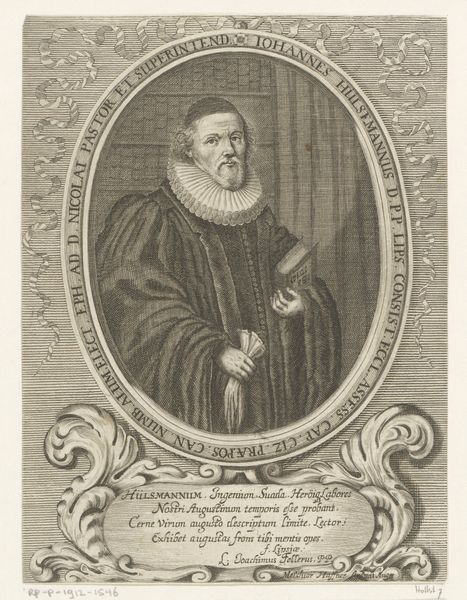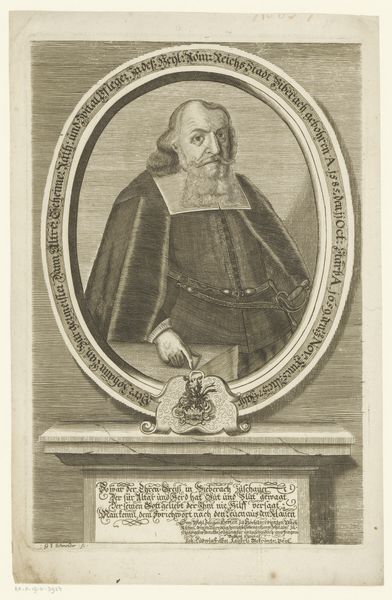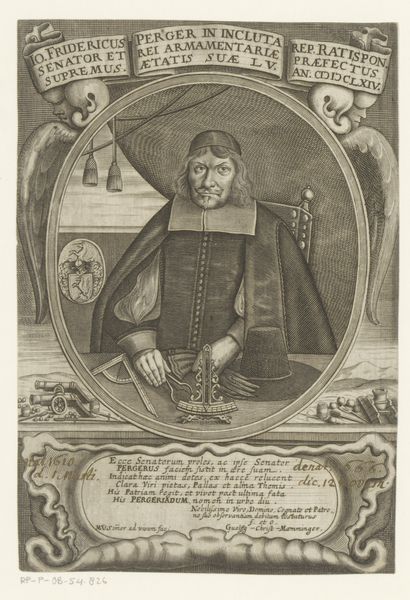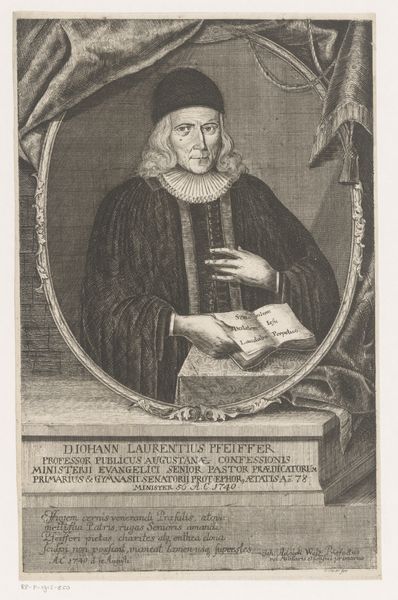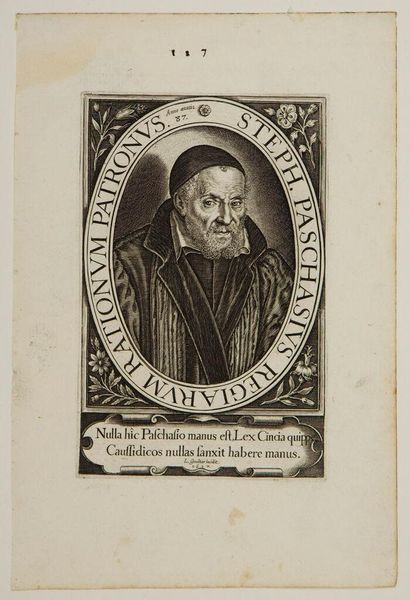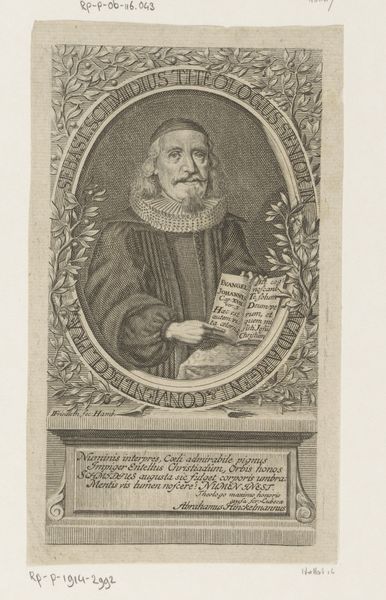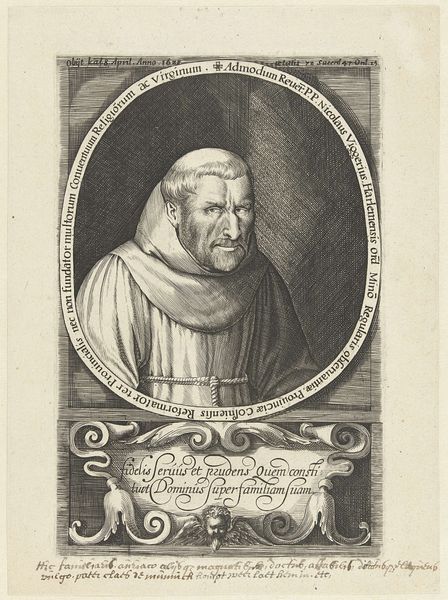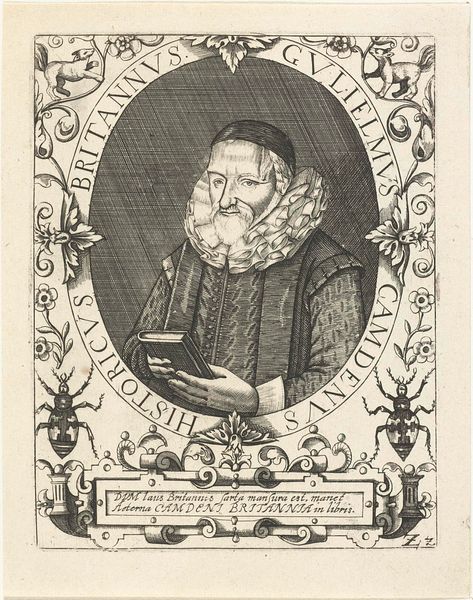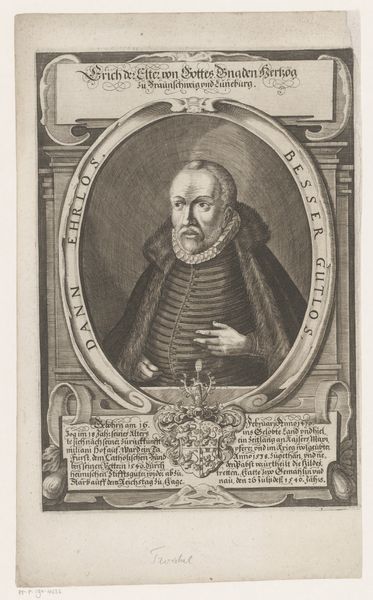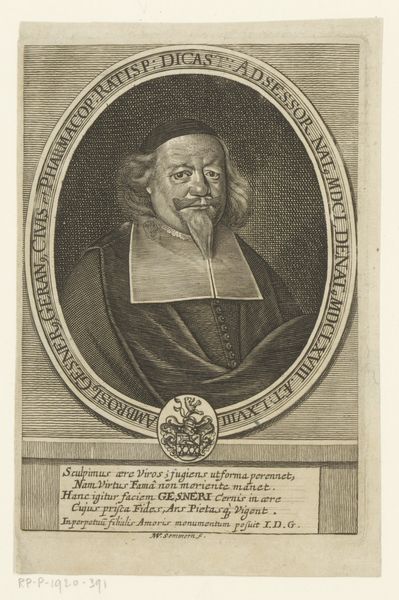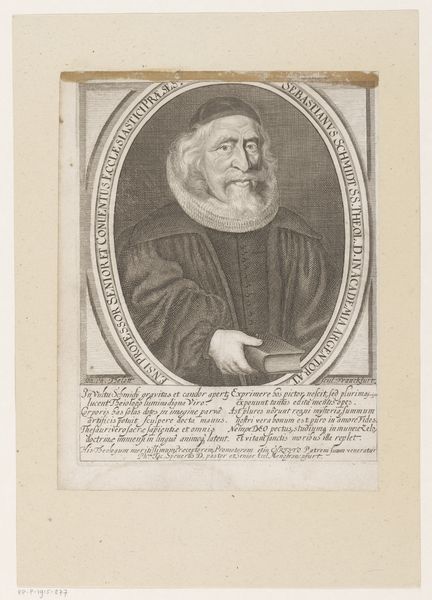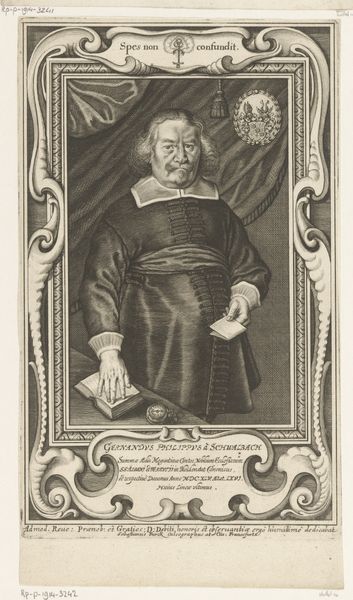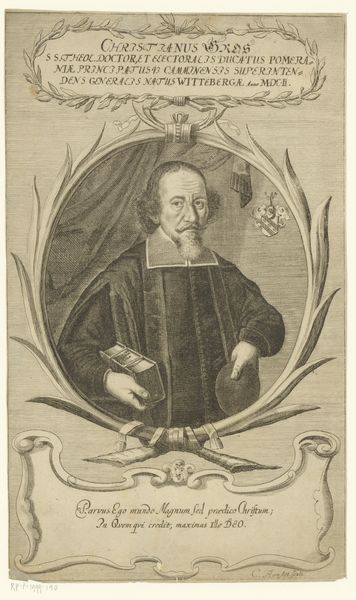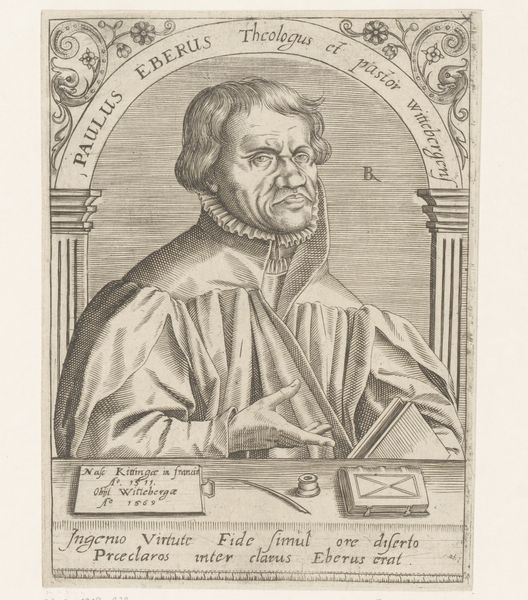
engraving
#
portrait
#
baroque
#
caricature
#
history-painting
#
engraving
Dimensions: height 306 mm, width 192 mm
Copyright: Rijks Museum: Open Domain
Editor: Here we have "Portret van Balthasar Friedrich Saltzmann," an engraving dating from between 1672 and 1717 by Johann Adam Seupel. It's currently housed at the Rijksmuseum. The intensity in the subject’s eyes and that striking Baroque frame… It makes me wonder, what are we meant to understand about Saltzmann’s role in his society through this piece? Curator: That's a great question! This portrait operates within very specific visual politics. Think about it: engraving, as a reproducible medium, makes this image of Saltzmann widely accessible. Consider how that accessibility functioned. It not only memorializes him but also reinforces the authority and position of the clergy within the social structure of the time. What's highlighted isn’t just his likeness, but his *function* as a religious leader. Editor: So it's less about him as an individual and more about him representing something bigger? Like an ideal? Curator: Exactly! The inclusion of the Latin inscription "OMNE PECCATUM CRUCIFIGAT IN TE" (May the cross crucify all sin in you), plus the crucifix in the background, underscores that explicit aim. The portrait is essentially a visual tool to promote faith, with Saltzmann functioning as a facilitator between the divine and the viewer. How do you think that purpose changes how we might appreciate it today? Editor: That’s really interesting. Knowing its intention allows me to look past the individual and consider the artwork as a historical artifact shaped by specific religious and social intentions of that era. I didn't fully recognize it as more of a promotion piece at first glance. Thank you for your help! Curator: Absolutely, the portrait speaks volumes about power, image-making, and the social function of art within the historical moment. Always question whose voice we're really hearing!
Comments
No comments
Be the first to comment and join the conversation on the ultimate creative platform.
